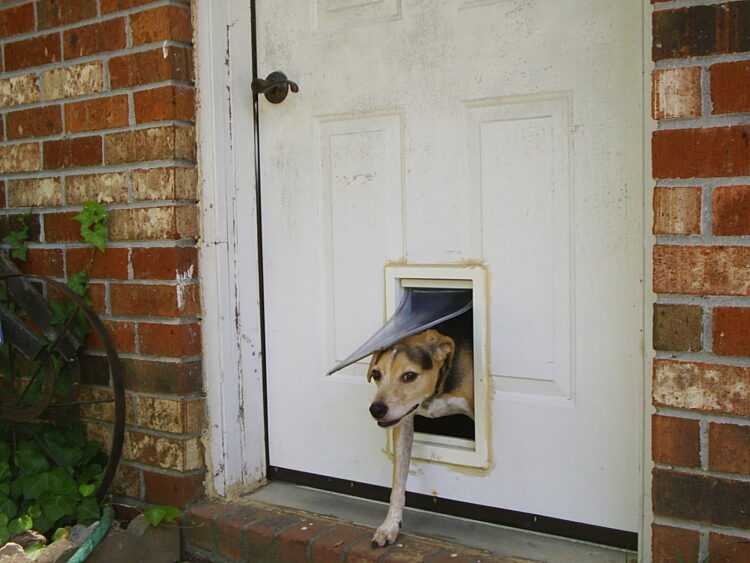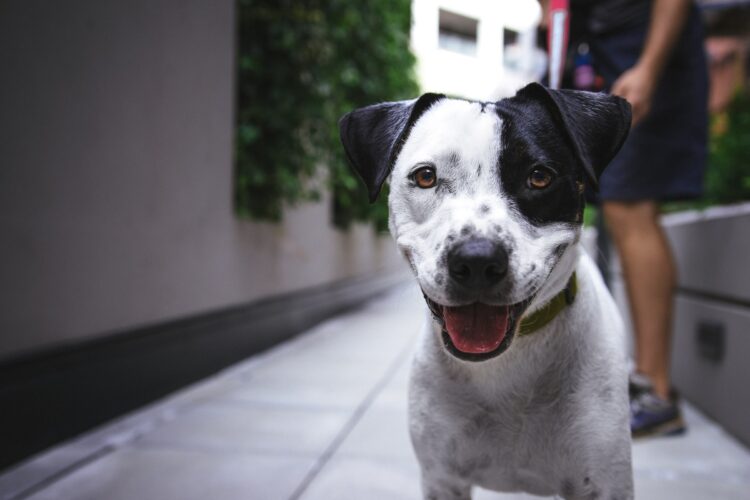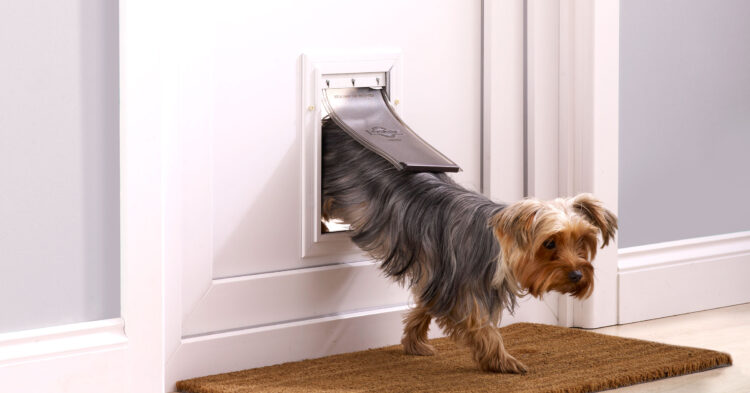It’s finally time to take your new dog home! You’ve planned ahead and had everything ready to go. His name is splattered across a cute dog bowl. You are eager to go on walks with him. You even have a cabinet stocked with dog food and goodies to keep it happy, and at the foot of your bed, there’s a comfy dog bed.
Finally, the doggy door is up and running, ready to be used (or not). Many people believe their dog will know how to use the dog door instinctively, but this is not always the case. You must teach them this skill. But don’t worry, they’ll be there in no time with a bit of perseverance.
What Is The Purpose Of A Dog Door?

Doggy doors are available in different sizes, and you can utilize them in a variety of situations. Depending on your requirements, your dog can use the pet door installed in glass doors, windows, security screens, front doors, and even walls.
The most crucial thing is that you select the right door for your pet. If it’s too high, they’ll have problems walking over it, and if it’s too small, they’ll have to squeeze through.
If you’re buying a dog door for a puppy, find out what size it can grow into eventually to assist you in choosing the right door for your dog. Visit Hale Pet Door for the best pet doors.
1. Recognize When It’s Time To Quit

When it comes to training a new puppy or an older dog, the key is to strike the correct balance between devoting just enough time to training while keeping sessions short enough to avoid frustrating your canine partner. The ideal method to approach training sessions is to keep going until you achieve success, applaud yourself, and stop.
It will reduce frustration (for both you and your dog!) while also allowing your canine to be motivated and responsive. On the other hand, do not terminate a training session too quickly. It’s crucial for dogs to understand what constitutes a win, therefore, attempt to reinforce positive behavior during training sessions. It’s vital to maintain a positive attitude at all times!
2. Consistency Is The Key
One of the most common faults in the training process is inconsistency. It’s critical to establish ground rules early on and stick to them. Variations in the training procedure will confuse and frustrate your dog, reducing their learning ability. Inconsistency also destroys trust, which is one of the most critical aspects of your dog’s connection to you.
3. Using Treats To Entice

Some dogs require a bit more coaxing. You can either sit outside with a treat in your hand and call your dog while holding the flap open, this time showing them the treat instead of your face. Alternatively, you can draw them out by leaving a trail of little snacks from inside to outside. Positive reinforcement is crucial for making anyone learn quickly!
4. Stay Calm
Every pet learns at their own pace, so be patient if yours takes a little longer to get used to their door. Trying to hurry the procedure can cause your pet to become confused and not adhere to your instructions entirely. Avoid forcing or pushing your pet through the door by exercising self-control. To begin, show them how to operate the flap. To demonstrate how it works, you can push it open and shut. Keep it loose and urge your dog to look through it to ensure that it is safe. Position yourself outside if your pet is having problems getting used to their door.
5. Adapting To Various Flaps

Various flaps are available for different types of pet doors on the market.
- Clear Flaps – If you have a clear flap pet door, your pet can mistake it for a window. You can help your pet distinguish the pet door from a window by demonstrating that the flap opens or by placing a marker on the flap, such as a piece of tape, to help them recognize it from a window.
- Electronic Flaps – Electronic Flaps are stiff flaps that are activated by a microchip or a collar key. Some of these doors create noises as well, which may initially alarm your pet. It is possible to train your pet by positively reinforcing the door’s loudness. If this fails, you can disable the electronic component of the door momentarily to allow them to use it generally until they are ready.
- Magnetized Flaps – For energy efficiency, most non-electronic pet doors employ magnets to close the door. These magnets can make it difficult to open the flap; thus, they should be removed for training purposes (if they are removable, depending on the model you buy). It will be easier for your pet to train if you remove the magnets.
6. Avoid Emotional Overload
Too much emotion, whether happy or negative, can confuse and upset your pet. Negative feedback may encourage your pet to identify the pet door with fear, necessitating counter-conditioning. Too much positive feedback might make learning difficult. It’s possible that your pet will get extraordinarily excited or hyperactive.
If your dog’s coach, pet owner, or other family members present themselves as calm authority figures, your pet has a better chance of staying focused and learning quickly. Positive reinforcement and compassion have a more significant impact on an animal’s learning ability.
7. Stick To A Schedule

It refers to sticking to a schedule and putting up your best effort. It’s crucial to have consistent, step-by-step sessions; if you set aside 10 minutes a day, make that your daily training time. Working at different times throughout the day might easily irritate your pet and lead them to lose attention. You should also ensure that you do not become easily frustrated. Continue until success is achieved, and then evaluate the session before ending it.
Conclusion
After you’ve purchased your new dog door, you’ll need to install it and train your dog to use it. You may be unclear where to begin and concerned that you may make a mistake and cause your dog to detest its new door, but the strategies listed above will make the process go more smoothly.
 Hi Boox Popular Magazine 2024
Hi Boox Popular Magazine 2024



